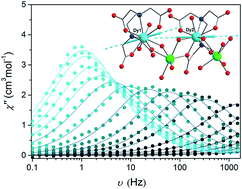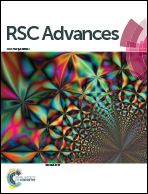Enchaining EDTA-chelated lanthanide molecular magnets into ordered 1D networks†
Abstract
Extending molecular systems into chain networks is a unique method with which to orient magnetic molecules into well-ordered arrays along one dimension, and study their resulting properties. Complexes of the formula Na[Ln(EDTA)(H2O)3]n·5H2O are presented, where Ln = YIII (1), EuIII (2), TbIII (3), DyIII (4). EDTA chain-like architectures were obtained in water by adding Na+ as a bridging ion. Structures were characterized using single crystal X-ray diffraction, and X-ray powder diffraction. Infrared spectroscopy and elemental analysis were performed on all samples in order to confirm bulk purity of the products. Direct current and alternating current magnetic susceptibility measurements were carried out on all paramagnetic complexes in order to investigate any potential magnetic interactions between ions, as well as potential dynamic magnetic properties. TbIII (3) and DyIII (4) compounds were confirmed to exhibit slow relaxation of the magnetization under an optimized applied dc field. Energy barriers to magnetic relaxation and pre-exponential factors differed dramatically between the lanthanide analogues, thus, magnetostructural correlations were performed using shape analysis techniques, which explained the presence of multiple relaxation processes. Furthermore, the trajectory of the anisotropy axes of the DyIII ions in 4 was modelled and compared with our previously studied GdIII system.



 Please wait while we load your content...
Please wait while we load your content...